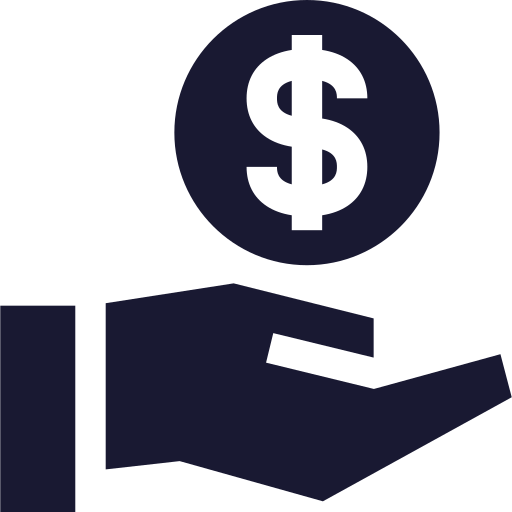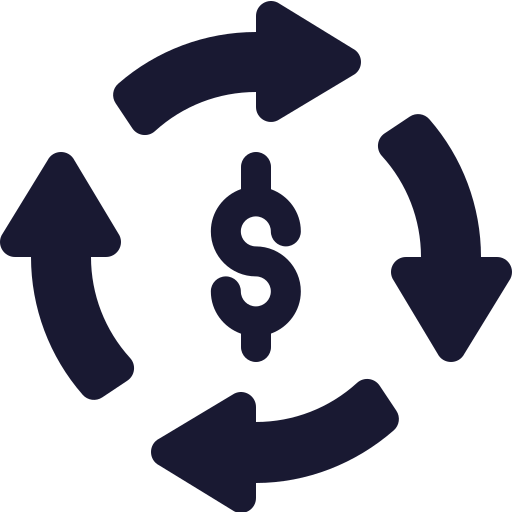“Progress always involves risk. You can’t steal second base and keep your foot in first.” –Fred Wilcox
What is Cash on Cash Return?
Introduction | CoC Return in Real Estate
If there’s anything we need to get out of the way when it comes to real estate investments, it’s that any form of investment involves a certain amount of risk. This is why in order to become a successful physician investor, you must turn to reliable metrics such as cash on cash return to determine whether an investment is worth getting into or not. In identifying whether an investment is worthwhile, there are no shortcuts and a great deal of good old-fashioned number crunching is an important step in every process. Luckily, there are a handful of simple equations you can utilize to help visualize how certain real estate ventures may pan out. Computing whether an investment can provide good cash on cash return is a form of due diligence that helps you maximize income, minimize risk, and make financially sound investment decisions.
Definition of CoC Return
Seasoned physician investors understand that the valuation and appreciation of a property investment is dependent on factors such as, but not limited to, location, demographics, current economic landscape, and more. Apart from doing your research on the neighborhoods you wish to be part of, another form of due diligence is to map out your expected annual returns. Put simply, cash on cash return is defined as the rate of annual return used in real estate transactions which calculates the cash income earned from the out-of-pocket cash you invested in a property.
Also referred to as the equity dividend rate, cash on cash return is a fairly simple formula that computes the ratio of cash earned to cash invested, but does not include taxes and debts incurred to acquire the said property. The cash on cash return formula is as follows:
Annual Pre-Tax Cash Flow / Total Cash Invested
where Annual Pre-Tax Cash Flow stands for:
(Gross Rent + Other Income) – (Vacancies + Operational Expenses + Annual Mortgage Payment)
The Total Cash Invested number should include all of the capital which you shelled out of your own pocket – debt not included. This number usually includes all actual cash invested, upfront repair or maintenance costs, and loan down payments.
The Annual Pre-Tax Cash Flow includes all cash on hand after expenses and losses have been accounted for. This number usually includes your projected annual rental income (including any other additional means of income generated by the property) minus all monthly expenses to be incurred (utilities, maintenance costs such as landscaping, pest control, and the like).
Once you have both of these numbers figured out, you simply divide the Annual Pre-Tax Cash Flow by the Total Cash Invested. Multiply by 100, and there you have it – cash on cash return.
What is Good Cash on Cash Return?
The Importance of Cash on Cash Return in Real Estate Investments
Based on experience, it’s always tricky to figure out how to best assess an investment opportunity and it never hurts to proceed with caution. This is why equations like cash on cash return exist. In real estate, it is a metric that is normally used to gauge the profitability of an investment property. It projects the cash yield an investor can possibly get out of a real estate investment. While it definitely has its own pros and cons, the cash on cash return formula provides investors with a bird’s eye view of a potential investment, from cash distributions to overall investment performance per annum.
Another important detail the cash on cash return formula reveals is an estimate of how long it will take before the investment ripens. For example, let’s say you invest $10,000 into a real estate syndication (Total Cash Invested) and you receive $1,000 over the course of a year (Annual Pre-Tax Cash Flow). This means that this investment will yield a 10% cash on cash return [($1,000 / $10,000) x 100], and it will take approximately 10 years for you to get back 100% of what you invested plus profit.
Learning About CoC Return
Strengths and Weaknesses
Like any other investment performance metric, cash on cash return has its strengths and weaknesses. Here are important points to consider when referring to cash on cash return as a metric for your investment decisions.
Strengths:
- It lets you compare investments quickly.
- At times where you are presented with a selection of investment opportunities, the cash on cash return formula comes in handy the most. It allows you to compare investments with ease given that it’s a simple equation that projects how well an investment is able to perform. Which investment opportunity requires the least out-of-pocket expense from my end? What investment opportunity will reap the most cash yield and how long will it take me to reach that goal? These are questions that can definitely be answered by cash on cash return.
- It allows you to see how certain factors can affect your return.
- Because the cash on cash return formula is as straightforward as it gets, it allows you to play around with its variables to see how it can affect your returns.
- It shows a simple overview of the ratio of returns to out-of-pocket investment per year.
- What’s great about cash on cash return is it measures the net income relative to the actual cash that was paid to acquire the investment. If you noticed, any debt that was incurred for the investment is not part of the equation. This is especially helpful for real estate transactions because oftentimes, your rental income will have taken care of the mortgage on its own.
Weaknesses:
- It does not include taxes in the equation.
- One of the only downsides to the cash on cash return formula is that it does not take an investment’s tax arrangements into consideration. The reasoning here is that tax arrangements of each investment per year can vary, although this affects the formula’s accuracy in projecting an investment’s actual cash return. As it goes with any type of investment, take everything with a grain of salt, assess every possible angle of the investment carefully, and make sure not to act out of impulse just because the cash on cash return rate you arrived at seems oh so amazing. Remember that if your taxes turn out to be just as high, it may impact any potential high returns. Please refer to this blog post for real estate tax benefits for physician investor, and the less known yet effective tax saving strategy of Real Estate Professional Status.
- It underestimates your profit potential.
- When you buy a piece of real estate, there are primarily two ways in which you can make money – 1) monthly cash flow, 2) appreciation of property over time and ability to sell it at a higher price. While Cash on Cash return takes in to account the monthly cash flow, it does not provide a detailed picture of benefits from property value appreciation. In order to understand the overall benefits from cash flow and appreciation, there is another metric you have to pay attention to – this is called Internal Rate of Return or IRR.
- Sure, cash on cash return shows what you can get from an investment each year but it stops at that. It doesn’t take the whole profit picture into account. While it computes your mortgage as an expense, it doesn’t highlight the reality that each mortgage payment goes to the fulfillment of interest payment and principal payment combined. What’s even greater to realize is that as long as your cash flow scenarios remain positive, your mortgage expenses are technically paid off by your tenants, which, in turn, increases your equity in said property.
Summary
While cash on cash return definitely has a bunch of benefits to boot, we advise you not to be totally reliant on this number alone. Cash on cash return is great at helping you assess the potential value of a real estate investment but it shouldn’t be your only criteria for getting into an investment. In conclusion, investment decisions should always be based on the whole picture – we cannot stress this enough. Keep in mind that the metrics you utilize should also be relative to the goals you wish to achieve for each investment, may it be appreciation or positive cash flow.
Here at PhysicianEstate, we welcome all physician entrepreneurs to learn about commercial real estate investments, rental property investments, and wealth generation. We encourage all physicians to eventually become real estate physician investors. We know a great deal about Who – What – Why – How.
Stay in touch with us by signing up for our newsletter. The newsletter will keep you up to speed on the current real estate investments we are looking at, provide physicians with investment opportunities, and much more.
Legal Disclaimer: This is not investment advice. I am not a legal and/or investment advisor. This is my personal blog, and all information found here, including any ideas, opinions, views, predictions, forecasts, commentaries, suggestions, or stock picks, expressed or implied herein, are for informational, entertainment or educational purposes only and should not be construed as personal investment advice. These are my views, it is not a production of my employer, nor is it affiliated with any broker/dealer or registered investment advisor. While the information provided is believed to be accurate, it may include errors or inaccuracies. To the maximum extent permitted by law, PhysicianEstate disclaims any and all liability in the event any information, commentary, analysis, opinions, advice and/or recommendations prove to be inaccurate, incomplete or unreliable, or result in any investment or other losses. You should consult with an attorney or other professional to determine what may be best for your individual needs. Your use of the information on the website or materials linked from the Web is at your own risk.



















